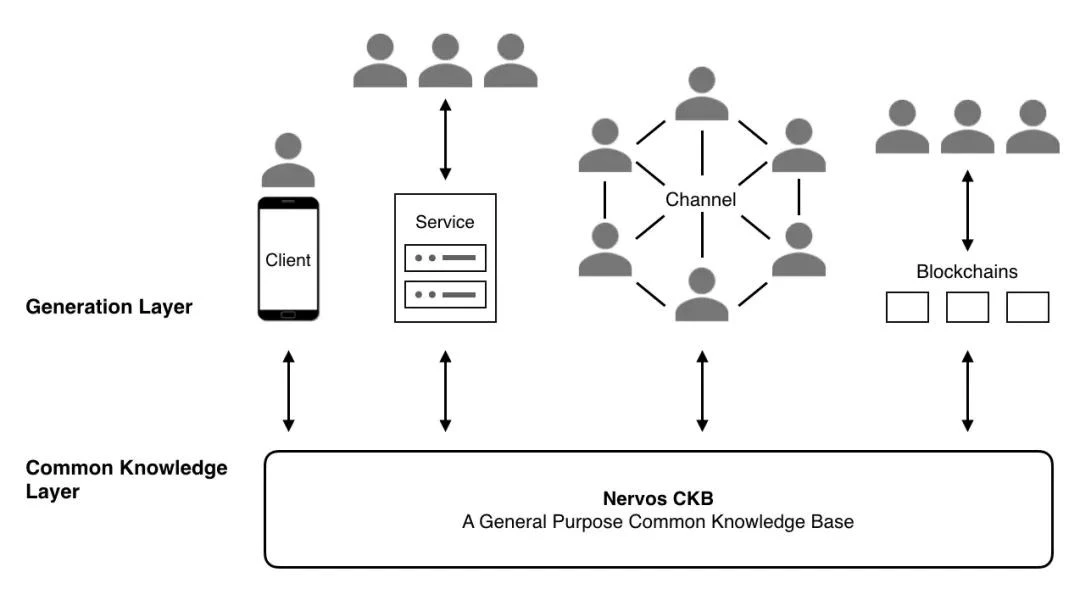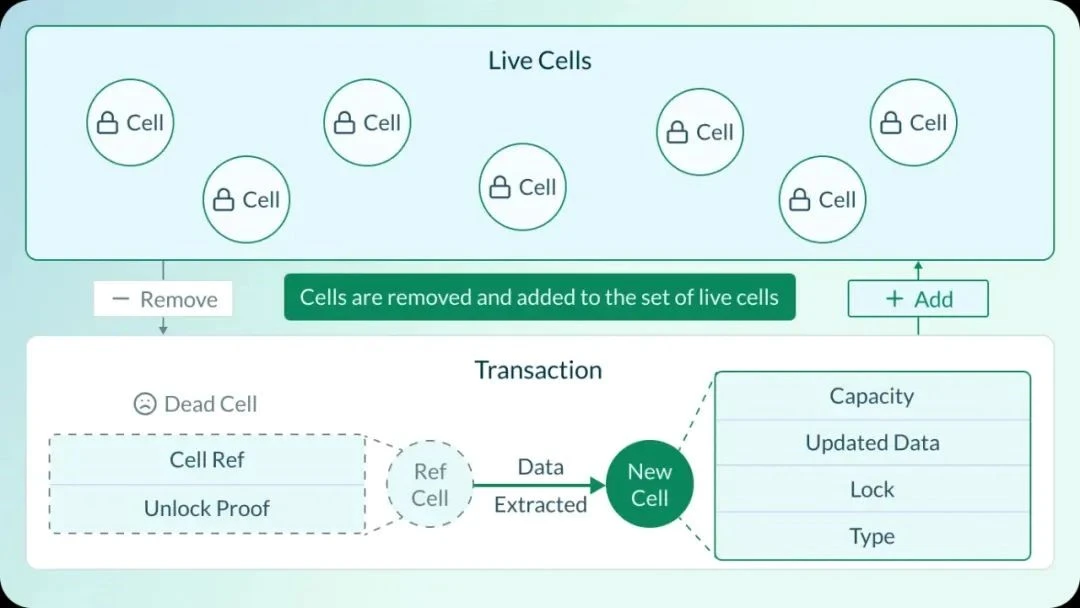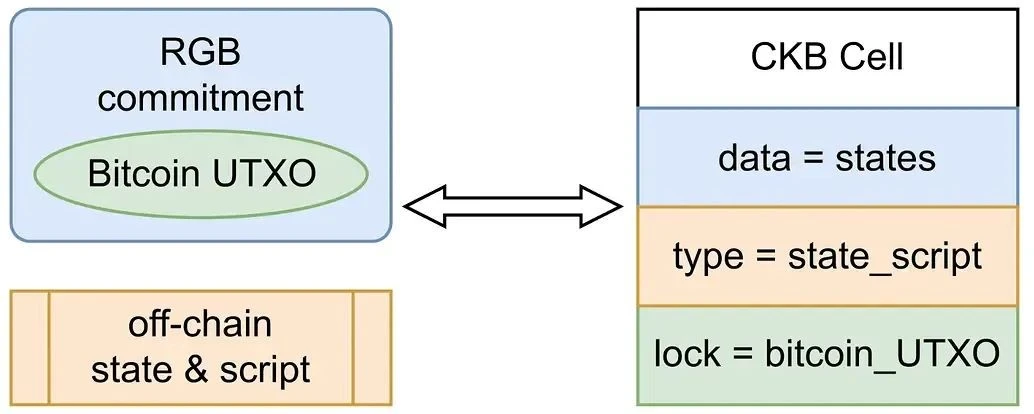Project Background and Introduction
As the largest cryptocurrency, Bitcoin continues to gain adoption and recognition. However, its success has also exposed some limitations and challenges, especially in terms of scalability. For example, after the Segwit upgrade, the Bitcoin blockchain limited the block size to within 4 MB, which restricts the number of transactions that can be processed within a given time. As the network grows, this limitation has led to longer confirmation times and higher transaction fees, reducing the efficiency of Bitcoin in handling large transaction volumes. In addition to value transfer, Bitcoin's script language currently lacks the flexibility and expressiveness required to develop complex smart contracts compared to other blockchains. To address these limitations, various Layer 2 (L2) solutions have been proposed, such as payment channels, sidechains, and Rollup. Most of them aim to scale Bitcoin by processing transactions off-chain, attempting to increase transaction throughput without compromising the security of the base layer. For example, the Lightning Network has created a second-layer payment channel network, allowing nearly instant micropayments. Another approach is sidechains— independent blockchains connected to the Bitcoin main chain, with greater script possibilities and faster transactions. However, these solutions often involve trade-offs, such as increased complexity, trust assumptions, and potential security vulnerabilities.
Nervos Network is one of the scalability solutions for Bitcoin, adopting a more native approach by modifying the UTXO model that supports Bitcoin. It has improved the RGB protocol to provide Turing-complete contract capabilities for Bitcoin without the need for cross-chain bridges. Nervos Network was proposed in the first quarter of 2018 by Terry Tai, Kevin Wang, Cipher Wang, and Daniel Lv. It is a Layer 1 blockchain aimed at improving scalability. To drive the development of the network, the project team raised over $100 million from seed rounds, private rounds, and public offerings. In November 2019, Nervos Network's Layer 1 blockchain, the Common Knowledge Base (CKB), went live. In February 2024, CELL Studio, led by Nervos co-founder Cipher Wang, introduced the RGB++ Bitcoin Layer 1 asset issuance protocol. Inspired by the RGB protocol, the RGB++ protocol uses CKB for data availability and execution layers, enabling smart contract capabilities and asset issuance for Bitcoin. Since the mainnet launch of RGB++ in April 2024, the number of projects issuing assets on Bitcoin using RGB++ has continued to increase. As of June 2024, over 15 existing ecosystem projects have reinvigorated on-chain activities for CKB.
Technical Architecture and Features

Source: Nervos Network
Nervos Network adopts a layered architecture, including an L1 blockchain (Common Knowledge Base, CKB) that can be extended through payment channels and RGB++. The Cell model is an improved version of the Bitcoin UTXO accounting model, and CKB-VM is a custom virtual machine that supports the network's layered design. CKB-VM provides a flexible execution environment for initiating transactions or building applications on the network. This design allows the network to vertically scale by running dedicated components at each layer, similar to modular blockchains.
Common Knowledge Base (CKB): CKB is the underlying L1 blockchain of Nervos Network, operating similarly to Bitcoin and using a proof-of-work (PoW) consensus mechanism. It employs an upgraded version of the Bitcoin algorithm called NC-MAX to improve network efficiency and response speed by accelerating transaction confirmation times and reducing orphan rates. While Bitcoin targets a 10-minute block interval, with mining difficulty adjustments approximately every two weeks, CKB dynamically adjusts block intervals (approximately every four hours) based on changes in network activity to optimize performance.
CKB uses the Eaglesong function to ensure network security, which is an ASIC-resistant custom hash function that can replace the widely used SHA256 hash function. Eaglesong is a sponge function optimized for multiple cryptographic elements, providing security equivalent to other PoW hash functions while specifically tailored for Nervos Network.

Source: Nervos Network
Cell Model: The Cell model is the core of CKB's data structure, enabling the storage and validation of any data on-chain. The original script language and UTXO model of Bitcoin limit its ability to execute complex computations required for smart contracts. In contrast, CKB generalizes the UTXO model, allowing more flexible data storage and validation. Unlike Bitcoin, which uses a single script to validate transactions, CKB introduces dual scripts in its Cell model:
- Lock Script: Ensures that only authorized users can access and use the contents of the Cell, similar to Bitcoin.
- Type Script: An optional script used to set rules for how the Cell can be used or modified in future transactions.
This system enables CKB to support more functionalities compared to Bitcoin's limited options, making it more suitable for various applications. Each Cell in CKB is a programmable Cell, capable of storing different data types such as tokens, smart contracts, and specific application states. It can also run complex scripts similar to Turing-complete languages. Cells operate independently, allowing them to be updated or referenced in a parallel manner without affecting other parts of the blockchain, thereby enhancing scalability.
CKB-VM: CKB-VM is the execution engine of CKB, used for running smart contracts and decentralized applications. This virtual machine uses the RISC-V instruction set, a flexible, simple open-source hardware architecture that supports various programming languages, including popular languages such as C and Rust. This wide compatibility sets CKB-VM apart from other blockchain virtual machines that are typically limited to specific languages, opening it up to a broader developer community. The CKB network also supports SDKs for mainstream languages such as JavaScript, Rust, Go, and Java, making it convenient for developers to use familiar tools for development. This makes it easier for developers to create complex decentralized applications using familiar programming languages.
Furthermore, the architecture of CKB-VM provides predictable gas fees, secure execution, and efficient integration with the Cell model, facilitating effective state management and transaction validation. The predictable gas fee model avoids unexpected costs, improves user experience, and simplifies contract development.
RGB++ Protocol

Source: Nervos Network
Project Background and Introduction
As the largest cryptocurrency, Bitcoin continues to gain adoption and recognition. However, its success has also exposed some limitations and challenges, especially in terms of scalability. For example, after the Segwit upgrade, the Bitcoin blockchain limited the block size to within 4 MB, which restricts the number of transactions that can be processed within a given time. As the network grows, this limitation has led to longer confirmation times and higher transaction fees, reducing the efficiency of Bitcoin in handling large transaction volumes. In addition to value transfer, Bitcoin's script language currently lacks the flexibility and expressiveness required to develop complex smart contracts compared to other blockchains. To address these limitations, various Layer 2 (L2) solutions have been proposed, such as payment channels, sidechains, and Rollup. Most of them aim to scale Bitcoin by processing transactions off-chain, attempting to increase transaction throughput without compromising the security of the base layer. For example, the Lightning Network has created a second-layer payment channel network, allowing nearly instant micropayments. Another approach is sidechains— independent blockchains connected to the Bitcoin main chain, with greater script possibilities and faster transactions. However, these solutions often involve trade-offs, such as increased complexity, trust assumptions, and potential security vulnerabilities.
Nervos Network is one of the scalability solutions for Bitcoin, adopting a more native approach by modifying the UTXO model that supports Bitcoin. It has improved the RGB protocol to provide Turing-complete contract capabilities for Bitcoin without the need for cross-chain bridges. Nervos Network was proposed in the first quarter of 2018 by Terry Tai, Kevin Wang, Cipher Wang, and Daniel Lv. It is a Layer 1 blockchain aimed at improving scalability. To drive the development of the network, the project team raised over $100 million from seed rounds, private rounds, and public offerings. In November 2019, Nervos Network's Layer 1 blockchain, the Common Knowledge Base (CKB), went live. In February 2024, CELL Studio, led by Nervos co-founder Cipher Wang, introduced the RGB++ Bitcoin Layer 1 asset issuance protocol. Inspired by the RGB protocol, the RGB++ protocol uses CKB for data availability and execution layers, enabling smart contract capabilities and asset issuance for Bitcoin. Since the mainnet launch of RGB++ in April 2024, the number of projects issuing assets on Bitcoin using RGB++ has continued to increase. As of June 2024, over 15 existing ecosystem projects have reinvigorated on-chain activities for CKB.
Technical Architecture and Features

Source: Nervos Network
Nervos Network adopts a layered architecture, including an L1 blockchain (Common Knowledge Base, CKB) that can be extended through payment channels and RGB++. The Cell model is an improved version of the Bitcoin UTXO accounting model, and CKB-VM is a custom virtual machine that supports the network's layered design. CKB-VM provides a flexible execution environment for initiating transactions or building applications on the network. This design allows the network to vertically scale by running dedicated components at each layer, similar to modular blockchains.
Common Knowledge Base (CKB): CKB is the underlying L1 blockchain of Nervos Network, operating similarly to Bitcoin and using a proof-of-work (PoW) consensus mechanism. It employs an upgraded version of the Bitcoin algorithm called NC-MAX to improve network efficiency and response speed by accelerating transaction confirmation times and reducing orphan rates. While Bitcoin targets a 10-minute block interval, with mining difficulty adjustments approximately every two weeks, CKB dynamically adjusts block intervals (approximately every four hours) based on changes in network activity to optimize performance.
CKB uses the Eaglesong function to ensure network security, which is an ASIC-resistant custom hash function that can replace the widely used SHA256 hash function. Eaglesong is a sponge function optimized for multiple cryptographic elements, providing security equivalent to other PoW hash functions while specifically tailored for Nervos Network.

Source: Nervos Network
Cell Model: The Cell model is the core of CKB's data structure, enabling the storage and validation of any data on-chain. The original script language and UTXO model of Bitcoin limit its ability to execute complex computations required for smart contracts. In contrast, CKB generalizes the UTXO model, allowing more flexible data storage and validation. Unlike Bitcoin, which uses a single script to validate transactions, CKB introduces dual scripts in its Cell model:
- Lock Script: Ensures that only authorized users can access and use the contents of the Cell, similar to Bitcoin.
- Type Script: An optional script used to set rules for how the Cell can be used or modified in future transactions.
This system enables CKB to support more functionalities compared to Bitcoin's limited options, making it more suitable for various applications. Each Cell in CKB is a programmable Cell, capable of storing different data types such as tokens, smart contracts, and specific application states. It can also run complex scripts similar to Turing-complete languages. Cells operate independently, allowing them to be updated or referenced in a parallel manner without affecting other parts of the blockchain, thereby enhancing scalability.
CKB-VM: CKB-VM is the execution engine of CKB, used for running smart contracts and decentralized applications. This virtual machine uses the RISC-V instruction set, a flexible, simple open-source hardware architecture that supports various programming languages, including popular languages such as C and Rust. This wide compatibility sets CKB-VM apart from other blockchain virtual machines that are typically limited to specific languages, opening it up to a broader developer community. The CKB network also supports SDKs for mainstream languages such as JavaScript, Rust, Go, and Java, making it convenient for developers to use familiar tools for development. This makes it easier for developers to create complex decentralized applications using familiar programming languages.
Furthermore, the architecture of CKB-VM provides predictable gas fees, secure execution, and efficient integration with the Cell model, facilitating effective state management and transaction validation. The predictable gas fee model avoids unexpected costs, improves user experience, and simplifies contract development.
RGB++ Protocol

Source: Nervos Network
In the past year, the CKB network has remained active. As of now, the daily average transaction volume of CKB is 43,600 transactions. This represents a 110% increase compared to the daily average of 20,800 transactions in the fourth quarter of 2023. In terms of new addresses, on-chain activities significantly increased in April. In April, 387,600 new addresses were created, marking a 181% increase compared to March. Since April, Cell activities on CKB have steadily increased, partly due to the launch of the RGB++ protocol. Cell activities are divided into Unspent Cells and Spent Cells. Unspent Cells can be used for future transactions, smart contract execution, and data storage, reflecting increased network activity and adoption. Although Spent Cells are no longer used as transaction inputs, they still contain valuable data that can be accessed and referenced, contributing to the historical record and data traceability of the blockchain. As of May 15, 2024, there are a total of 1.7 million Unspent Cells, representing a 13% increase compared to the end of the first quarter. As for Spent Cells, there are a total of 57.6 million Spent Cells on CKB as of the time of writing.
Since the launch of the RGB++ protocol on April 3, 2024, there have been over 13,200 transactions and 4,400 unique addresses using the protocol. Network activity in May and June has shown a declining trend, but the participation of more ecosystem projects utilizing RGB++ is expected to reverse this trend.
V. Security and Decentralization
As a PoW network, miners verify transactions and add new blocks to the blockchain by solving cryptographic puzzles, ensuring the security of CKB. For each mined block, miners receive the entire "Basic Issuance" reward for that block and a portion of the "Secondary Issuance" reward. Miners also receive proposal rewards or submission rewards from processing network transactions. To manage changes in network activity without compromising performance, CKB's custom NC-MAX consensus protocol adjusts mining difficulty approximately every four hours based on the network's orphan block rate. This optimization allows the network to adjust block times and reduce the likelihood of block reorganization, which could disrupt network stability.
Hash rate is a measure of the basic computational power of miners on a PoW blockchain. Therefore, hash rate represents the security of the CKB network. In 2024, CKB's total network hash rate has continuously reached new all-time highs. On April 27, the CKB network's hash rate reached 397.5 PH/s, the highest hash rate in the history of the CKB network. The increase in hash rate is partly due to Binance opening a CKB mining pool on April 18, 2024. Similarly, the average mining difficulty in 2024 has reached a historical high (3.96E on April 21).
VI. Ecosystem
Nervos Network continues to promote ecosystem development through funding, infrastructure, and tools support. At the launch of the mainnet in November 2019, approximately 5.7 billion CKB (17% of the allocation from the Genesis Block of CKB — valued at $62.4 million at the time of writing) was reserved for the Ecosystem Fund. Over the years, the Ecosystem Fund has provided seed funding for multiple ecosystem development initiatives to drive network development plans. One of these initiatives is the CKB Eco Fund (formerly known as InNervation), which focuses on incubating and investing in early and seed-stage projects that connect CKB and Bitcoin using RGB++. The CKB Eco Fund supports critical infrastructure and cross-domain decentralized applications in the ecosystem, including DeFi, gaming, tools, and NFT markets. In January 2024, the CKB Eco Fund launched the BTCKB program, aiming to enhance the integration between the Bitcoin and CKB blockchains through the PoW consensus mechanism and UTXO model. The BTCKB program introduces new smart contract capabilities to integrate BTC, Taproot Assets, and RGB++ assets into the CKB blockchain, enhancing the functionality of the Bitcoin blockchain. As part of this program, the CKB Eco Fund also incubated CELL Studio, a blockchain software company led by Nervos co-founder Cipher Wang and the lead of the BTCKB program. CELL Studio develops infrastructure and applications to enhance and expand the Nervos ecosystem, similar to how ConsenSys develops foundational tools for Ethereum such as Infura and MetaMask. Notable ecosystem tools developed by CELL Studio include:
CoTA: An aggregation protocol for fungible and non-fungible tokens on CKB.
ForceBridge: A cross-chain interoperability protocol connecting CKB with other blockchain networks, currently supporting Ethereum and Binance Smart Chain.
Spore: A protocol for on-chain Digital Objects (DOBs) supported by CKB.
Since the launch of the RGB++ mainnet in April 2024, over 15 existing ecosystem projects have utilized the protocol for asset issuance. Notable ecosystem projects include:
UTXO Stack: A Bitcoin L2 "OP Stack" based on the RGB++ protocol.
JoyID: A non-custodial wallet that uses biometric technology for user authentication, supporting multiple networks including Ethereum, Bitcoin, and RGB++ assets.
HueHub: A decentralized trading platform and launchpad supporting RGB++ assets on Bitcoin.
Stable++: A decentralized stablecoin protocol supporting CKB and BTC.
World3: A self-sovereign world game based on the RGB++ protocol and DOB.
Nervape: Multi-chain composable Digital Objects based on Bitcoin, with "base assets" issued on Bitcoin and "affiliated assets" issued on CKB.
Haste: An asset management solution for RGB++ assets.
d.id: A decentralized identity protocol for the Bitcoin ecosystem.
The RGB++ development roadmap released by CELL Studio emphasizes important plans to be completed in 2024, including:
Releasing a cross-UTXO chain issuance cross-chain protocol for RGB++ assets.
Cross-chaining Atomicals, Orderals, and other UTXO-based assets to CKB through the RGB++ protocol.
Proposing and implementing a multi-network extension solution for RGB++.
Connecting RGB++ with the CKB Lightning Network.
As part of the BTCKB program, the CKB Eco Fund also plans to launch cross-chain bridges and UTXO-based DEX connecting BTC and CKB. Additionally, the fund will utilize the RGB++ protocol to develop a payment channel network for CKB, with the concept verification already completed. This payment channel network will connect to the Lightning Network, making CKB more scalable and suitable for various blockchain applications.
VII. Competitive Analysis
As a Bitcoin L2 solution, Nervos Network's approach to extending Bitcoin's capabilities is primarily through the RGB++ protocol. Competitors like Stacks offer customized execution environments and programming languages, while Rootstock pegs transactions between the two chains. In contrast, Nervos aims to enhance the native Bitcoin experience without adding complexity or compromising decentralization. With the RGB++ protocol, CKB can provide a smart contract execution environment closely integrated with Bitcoin's original UTXO model. This design may give Nervos Network an advantage, attracting users skeptical of solutions that deviate from the core principles of Bitcoin — decentralization and security.
Compared to solutions like the Lightning Network, CKB's smart contracts offer a broader range of functionality, serving developers to build more complex applications on Bitcoin. While the Lightning Network facilitates fast and low-cost transactions, it does not support complex decentralized applications. Meanwhile, platforms like Liquid Network, Merlin Chain, and Bouncebit require semi-centralized alliances to manage cross-chain bridges between sidechains and the Bitcoin mainnet. CKB's use of off-chain computation and on-chain settlement avoids this level of centralization.
However, Nervos' approach to extending Bitcoin using the RGB++ protocol is not without limitations. The reliance on external networks (especially the CKB blockchain) for data availability and asset issuance adds complexity and potential latency to Bitcoin. Additionally, the lack of comprehensive development tools and multi-party interaction solutions limits the protocol's ability to effectively support decentralized applications. Lastly, the transparency of transactions on the CKB blockchain compromises the privacy advantages initially provided by the RGB protocol.
VIII. Conclusion
As the demand for scalability and functionality beyond Bitcoin's original capabilities continues to grow, the Bitcoin L2 market is evolving. Various L2 solutions such as the Lightning Network, sidechains, and Rollups aim to increase Bitcoin's throughput without compromising security by moving transactions off the main chain. However, these solutions often bring new complexities and security challenges. Nervos stands out by extending the RGB protocol through RGB++. RGB++ provides native extensions for Bitcoin, integrating deeper smart contract functionality directly related to the Bitcoin UTXO model. These features, in turn, promote more seamless and secure extensions of Bitcoin's utility. Additionally, work is underway to connect the payment channel network with the Lightning Network, making CKB more scalable and suitable for many blockchain applications.
Ultimately, Nervos aims to strengthen its position in the Bitcoin L2 space by simplifying user and developer experiences. Furthermore, Nervos can prioritize providing RGB++ support for a wider range of asset types and complex applications, thereby enhancing its practicality within the Bitcoin ecosystem. By doing so, Nervos can play a crucial role in the broader adoption and functionality of Bitcoin as a decentralized application and smart contract platform. ```
免责声明:本文章仅代表作者个人观点,不代表本平台的立场和观点。本文章仅供信息分享,不构成对任何人的任何投资建议。用户与作者之间的任何争议,与本平台无关。如网页中刊载的文章或图片涉及侵权,请提供相关的权利证明和身份证明发送邮件到support@aicoin.com,本平台相关工作人员将会进行核查。




